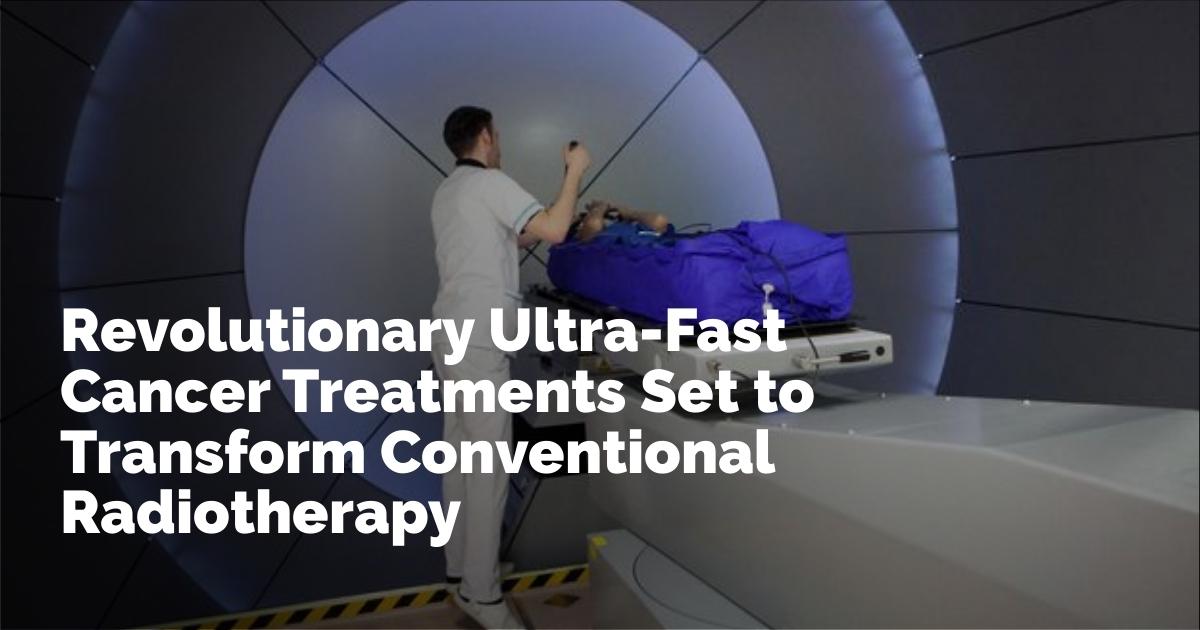The Ultra-Fast Revolution in Cancer Treatment
A groundbreaking advancement in cancer treatment is on the horizon, promising to tackle a broader scope of cancer types with fewer side effects compared to conventional radiotherapy. Amazingly, this revolutionary treatment takes less than a second to administer.
Deep within the sprawling caverns on the outskirts of Geneva, Switzerland, pioneering experiments are underway that may usher in a new era for radiotherapy machines. Spearheaded by the European Laboratory for Particle Physics (Cern), these experiments aim to transform cancer treatment by curing complex brain tumors, eradicating metastasized cancers, and reducing the heavy toll cancer treatments often take on patients.
Cern, renowned for its particle physics breakthroughs, including the landmark discovery of the Higgs boson in 2012, has adapted its expertise to the world of cancer therapy. Over a decade ago, radiobiologist Marie-Catherine Vozenin, working at Geneva University Hospitals, and her colleagues published a paper outlining a novel approach to radiotherapy they called "Flash." By administering radiation at ultra-high dose rates, Flash can annihilate tumors in rodents while sparing healthy tissue. This technique immediately captivated the global scientific community, prompting a wave of research and trials.
Traditional radiotherapy, a staple in cancer treatment received by nearly two-thirds of cancer patients, often involves lengthy sessions to spread out the radiation dose, thus reducing side effects. Despite advancements in imaging and radiotherapy technology over the years, the risk of harmful side effects remains significant. For instance, while radiation can cure pediatric brain tumors, survivors often face lifelong challenges, such as decreased IQ due to radiation's impact on brain development.
Flash: Addressing the Limitations of Conventional Radiotherapy
The Flash method resonates because it offers solutions to long-standing limitations of conventional radiotherapy. Traditional approaches often struggle with delivering high doses safely due to the interconnected nature of tumors and healthy tissue. Flash potentially circumvents this by allowing higher radiation doses while minimizing damage to healthy cells.
In recent years, animal studies have consistently demonstrated Flash's potential to increase radiation doses significantly without triggering the side effects typically associated with traditional radiotherapy. Encouraging results include healthy lab mice showing fewer side effects after receiving Flash radiation and animals with head and neck cancers experiencing significantly reduced symptoms post-treatment.
Optimism for Flash in Human Treatments
Researchers like Billy Loo at Stanford University speak cautiously yet hopefully about the potential of translating Flash's benefits to human patients. Ongoing human trials worldwide seek to validate these promising preclinical findings. Notably, Cincinnati Children's Hospital plans to use Flash in early-stage trials for children with metastatic cancer, while Lausanne University Hospital is exploring its efficacy in treating localized skin cancers.
These trials are not only testing Flash's effectiveness but also seeking the ideal radiation type. Choosing between carbon ions, protons, electrons, and photons presents both possibilities and challenges. Each particle type carries unique properties that determine its suitability for different cancer treatments. For example, current Flash clinical trials favor protons for their ability to penetrate deeply into the body, reaching tumors embedded within internal organs.
Overcoming Practical Hurdles
Implementing Flash radiotherapy clinically is not without its challenges, notably the large, costly particle accelerators required. The need for such complex equipment might limit access to specialized centers, potentially necessitating travel for many patients. However, efforts to develop smaller, more versatile accelerators are underway, with institutions like Cern collaborating with French companies and Swiss hospitals to refine the technology.
These advances could render Flash therapy more accessible, potentially enabling any hospital equipped with conventional radiotherapy machines to adopt the Flash protocol. This would not only enhance treatment accessibility globally but also target complex tumors like glioblastoma, a notoriously aggressive brain cancer.
Bridging the Radiotherapy Gap
One of the critical motivations behind advancing Flash therapy is addressing the global "radiotherapy gap." Many low- and middle-income countries lack sufficient radiotherapy resources, with only a fraction of cancer patients in these regions having access to proper treatment. Flash could play a vital role in bridging this gap by offering efficient one-session treatments instead of the customary lengthy courses required in conventional therapies.
Such innovation would mean a substantial increase in treatment capacity, drastically improving public health outcomes in underserved areas. Additionally, even high-income countries could see benefits through cost savings, as Flash promises economic efficiency by reducing the number of treatments and subsequent hospitalizations due to complications.
The Path Ahead
The initial step for Flash involves rigorous trials to ascertain its efficacy compared to standard radiotherapy. Researchers are cautiously optimistic, driven by the potential life-altering benefits this technology promises. If successful, Flash could revolutionize cancer treatment, leveling disparities in access and efficacy while enhancing patient quality of life globally.
출처 : Original Source

